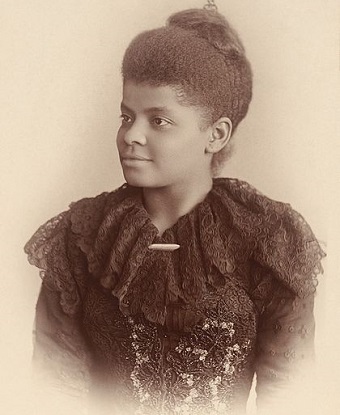


Dugarte, A. (2024, January 20). United States Slavery & Slave Trade Banner [Digital Graphic].
EBSCO Research Database
Leading research databases & discovery service providing scholarly journals, ...
Encyclopedia Britannica
Encyclopedia Britannica is a general knowledge English-language encyclopaedia. It is written and continuously updated by about 100 full-time editors and more than 4,400 contributors.
Gale Virtual Research Library
Gale databases focus on the humanities, theology, ethnic studies, music, women's studies and more. It contains peer reviewed journals, conference papers, and periodicals.
Gilder Lehrman Institute of American History
“History by Era” is the Institute’s gateway to our historical content. Each of the ten Eras is divided into thematic Sub-eras, which all follow the same template so readers can move easily from one to another: and more...
Faculty and Students can create a free account (using their Carrollton Google account) to access the Gilder Lehrman Institute's collection.
JSTOR
A digital library of more than 1500 searchable academic journals, books, and primary sources in the humanities - many come from peer-reviewed publications.
Library of Congress - American History
These pages link to selected collection content available online at the Library of Congress, arranged by broad categories. The Library's online content represents only a small percentage of its physical holdings..
Library of Congress - Slavery
Library of Congress Search of "Slavery" provides over 95,000 available resources including Newspapers, Book/Printed Material, Manuscript/Mixed Material, Photo, Print, Drawing, Legislation, Periodical, Film/Video, Map, Web Archive, and many more.
National Archives
The National Archives and Records Administration (NARA) is the nation's record keeper. Of all documents and materials created in the course of business conducted by the United States Federal government, only 1%-3% are so important for legal or historical reasons that they are kept by us forever.
Oxford African American Studies Center
The Oxford African American Studies Center focuses on the lives and events which have shaped African American and African history and culture.
 MDPLS is another great tool for research.
MDPLS is another great tool for research.
GET A FREE LIBRARY CARD HERE!
Some search phrases to use while searching:
"Slavery US" | "Slavery United States" | "Slavery 1750-1865" | "Transatlantic Slave Trade and United States" | "Women and US Slavery" | "Southern Life and Slavery" |

John Newton, creator of "Amazing Grace"
Arguably the best-known Christian hymn is "Amazing Grace." Its text, a poem penned in 1772 by John Newton, describes the joy and peace of a soul uplifted from despair to salvation through the gift of grace. Newton's words are also a vivid autobiographical commentary on how he was spared from both physical and spiritual ruin. It relates the happy ending of the tale of a defiant man who manages again and again to escape danger, disease, abuse, and death, only to revert to "struggles between sin and conscience."
The Creation of "Amazing Grace". Web.. Retrieved from the Library of Congress,

Who abolished slavery in England?
Slavery Abolition Act, (1833), in British history, act of Parliament that abolished slavery in most British colonies, freeing more than 800,000 enslaved Africans in the Caribbean and South Africa as well as a small number in Canada. It received Royal Assent on August 28, 1833, and took effect on August 1, 1834.
Henry, Natasha L.. "Slavery Abolition Act". Encyclopedia Britannica, 25 Jul. 2021, https://www.britannica.com/topic/Slavery-Abolition-Act. Accessed 8 September 2021.
The Former Slaver against Slavery Library of Congress
Adult Domestic Trafficking and the William Wilberforce Trafficking Victims Protection Reauthorization Act by Lindsay Strauss

The Underground Railroad refers to the effort--sometimes spontaneous, sometimes highly organized--to assist persons held in bondage in North America to escape from slavery. Historic places along the Underground Railroad are testament of African American capabilities.
Aboard the Underground Railroad: A National Register of Historic Places Travel Itinerary introduces ... anyone interested in African American history to the fascinating people and places associated with the Underground Railroad. The itinerary currently provides descriptions and photographs on 60 historic places that are listed in the National Park Service's National Register of Historic Places... It also includes a map of the most common directions of escape taken on the Underground Railroad and maps of individual states that mark the location of the historic properties.
From the National Park Service "Aboard the Underground Railroad: A National Register Travel Itinerary"
Phillis Wheatley was the first African American woman to publish a book of poetry, Poems on Various Subjects, Religious and Moral (1773). The following short poem is from that collection.
On Being Brought from Africa to America
by Phillis Wheatley
'Twas mercy brought me from my Pagan land,
Taught my benighted soul to understand
That there's a God, that there's a Saviour too:
Once I redemption neither sought nor knew.
Some view our sable race with scornful eye,
"Their colour is a diabolic die."
Remember, Christians, Negros, black as Cain,
May be refin'd, and join th' angelic train.

Written by Himself
Frederick Douglass, 1818 - 1895.
I have observed this in my experience of slavery, --that whenever my condition was improved, instead of its increasing my contentment, it only increased my desire to be free, and set me to thinking of plans to gain my freedom. I have found that, to make a contented slave, it is necessary to make a thoughtless one. It is necessary to darken his moral and mental vision, and, as far as possible, to annihilate the power of reason. He must be able to detect no inconsistencies in slavery; he must be made to feel that slavery is right; and he can be brought to that only when be ceases to be a man (Douglass 99).

Sojourner Truth was born into slavery, but would later become a strong advocate orator for the abolition of slavery and the women's right movement.
"In a speech given at the Women's Rights Convention in Akron, Ohio, in 1851, Truth proclaimed that 'If the first woman God ever made was strong enough to turn the world upside down all alone, these women together ought to be able to turn it back and get it right-side up again.' It was here, too, that Truth gave her most famous speech, entitled, 'Ain't I a Woman'" (from Library of Congress African American Odyssey exhibit Sojourner Truth).
Check out more information at the Sojourner Truth Memorial Committee.

... It is for us the living, rather, to be dedicated here to the unfinished work which they who fought here have thus far so nobly advanced. It is rather for us to be here dedicated to the great task remaining before us—that from these honored dead we take increased devotion to that cause for which they gave the last full measure of devotion—that we here highly resolve that these dead shall not have died in vain—that this nation, under God, shall have a new birth of freedom—and that government of the people, by the people, for the people, shall not perish from the earth.
November 19, 1863, President Abraham Lincoln, Gettysburg Address

Saturday, March 4, 1865
Fellow Countrymen:
At this second appearing to take the oath of the presidential office, there is less occasion for an extended address than there was at the first. Then a statement, somewhat in detail, of a course to be pursued, seemed fitting and proper. Now, at the expiration of four years, during which public declarations have been constantly called forth on every point and phase of the great contest which still absorbs the attention, and engrosses the energies of the nation, little that is new could be presented...

The following excerpt is from Ida B. Wells-Barnett speech given in February 1893. She delivered this speech twice, one by invitation of Federick Douglass at the Metropolitan African Methodis Episcopal Church, Washington, D.C. The original speech was a similar version given in June 25, 1892 in the New York Age. Wells-Barnett also published the speech as a pamphlet and delivered similar versions in October 1892.
Southern Horrors. Lynch Laws in All its Phases (1893)
The operations of law do not dispose of negroes fast enough, and lynching bees have become the favorite pastime of the South. As excuse for the same, a new cry, as false as it is foul, is raised in an effort to blast race character, a cry which has proclaimed to the world that virtue and innocence are violated by Afro-Americans who must be killed like wild beasts to protect womanhood and childhood.

One of the Last Slave Ship Survivors Describes His Ordeal in a 1930s Interview
by Becky Little
UPDATED: JAN 28, 2021 ORIGINAL: MAY 3, 2018
More than 60 years after the abolition of slavery, anthropologist Zora Neale Hurston made an incredible connection: She located one of the last survivors of the last slave ship to bring captive Africans to the United States...In fact, [the conducted interviews with Kossola] were only released to the public in a book called Barracoon: The Story of the Last “Black Cargo” that came out in May of 2018.

A Survivor of the Last Slave Ship Lived Until 1940
by Becky Little
UPDATED: APR 7, 2020 ORIGINAL: APR 6, 2020
The facial scars on her left cheek—which are preserved in photographs—indicate she came from the Yoruba people of West Africa. Her given name was “Àbáké,” meaning “born to be loved by all.” She and her mother and sisters were captured from their home by the army of the Kingdom of Dahomey and taken to the slave port of Ouidah in present-day Benin.
